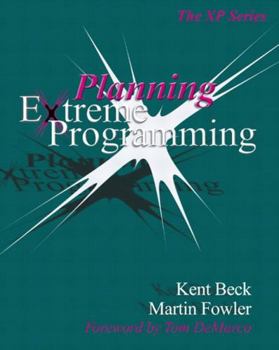Planning Extreme Programming
Select Format
Select Condition 
Book Overview
In this timely follow-up to Extreme Programming Explained, software engineering gurus Kent Beck and Martin Fowler show exactly how to plan your next software project using Extreme Programming (XP). KEY TOPICS: Planning is a vital element of software development -- but all too often, planning stops when coding begins. Beck and Fowler show how to make software projects far more manageable through a series of simple planning steps every project manager and team leader can easily perform >every day. The book follows XP projects from start to finish, presenting successful planning tactics managers and team leaders can use to adjust to changing environments more quickly and efficiently than ever before. This book is full of war stories and real-world analogies, and offers actionable techniques on virtually every page.MARKET: For every project manager called upon to deliver reliable, high-value code in "Internet time."





